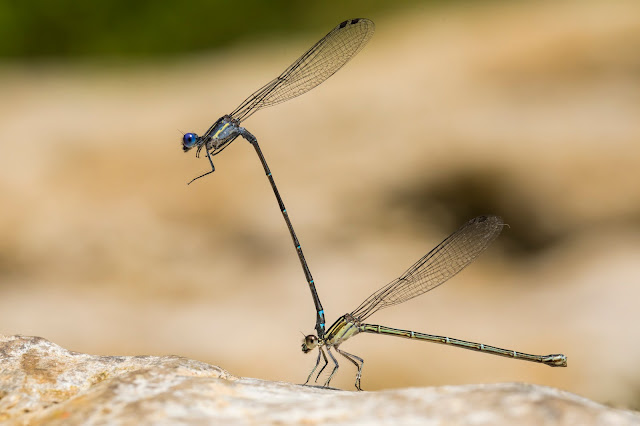This beautiful photograph taken by Nopaddol Paothong along our creek presented me with an identification challenge. It is a dusky dancer, Argia translata, but initially there were many candidates to chose from, an interesting chase. Starting with a high resolution, well focused picture helps to see the details. After cropping the picture above to focus on the female, I sent it to INaturalist which suggested that it was a Argia sp. called a dancer. This is a good starting point based on image recognition and consensus but not necessarily with expert input.
Why a dancer? Bug Lady a favorite of mine, has a lot more to say about them.
 |
| Click to enlarge |
"Dancers can be told from other damsels because the spines that adorn their legs are twice as long as the spaces between them (those spines help them to snag small insects on the fly). Their wings have short stalks (petioles) that, according to Paulson in Dragonflies and Damselflies of the East, make them strong fliers on their aerial hunts."
 |
| Male in cropped photo |
I initially favored Argia tibialis based on this description in Bugguide. "Male very dark above, with broad brownish-purple stripes on thorax,
abdominal segments 9 and 10 blue (see female above). Female has blue and brown forms, but
in both note wide black shoulder stripes, mostly dark abdomen.." I vacillated between other species and finally sent it into Bugguide for verification and they settled on A. translata.
Damsels can be tough to ID, frequently dependent on tiny details in color. This is why Bugguide is valuable, a place where experts can focus in on their specialty and debate the fine points. If you look at their photos of a genus, you will see many where they never settle on a species, an honest approach as not every question has an answer.
Fortunately the Argia males seem to have no problem identifying their own species.
Fortunately the Argia males seem to have no problem identifying their own species.

